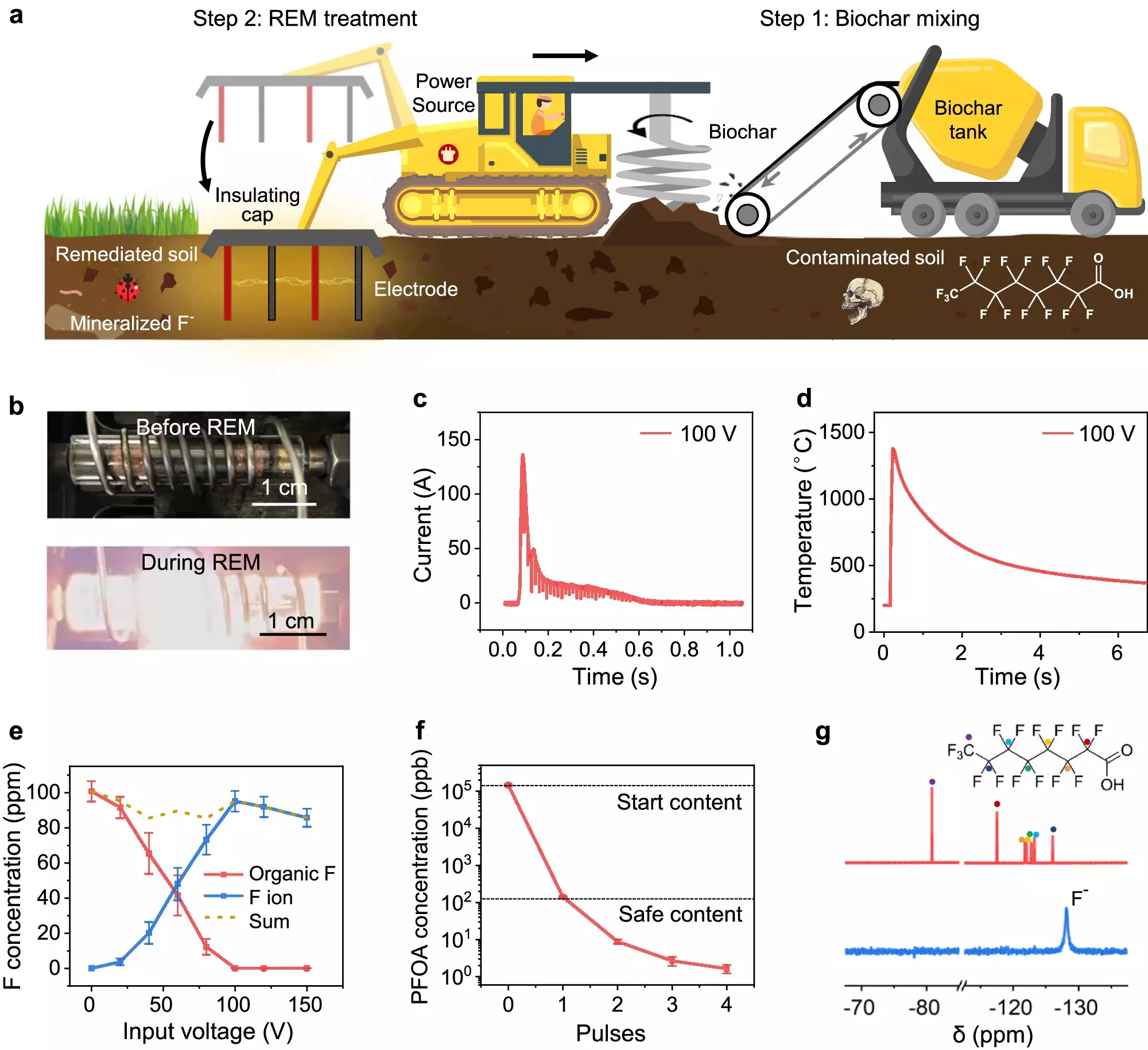In a recent study published in Nature Communications, Rice University chemist James Tour and his research team have introduced a groundbreaking approach to remediate synthetic chemicals that contaminate soil and the environment. This new method, known as the Rapid Electrothermal Mineralization (REM) process, has the potential to revolutionize the way we address environmental pollutants.
Per- and polyfluoroalkyl substances (PFAS) pose a significant threat to both the environment and human health. These persistent chemicals, commonly found in consumer products such as firefighter foam, food packaging, and cleaning products, are resistant to traditional methods of breakdown. The accumulation of PFAS in soil can lead to long-term contamination and bioaccumulation, making it crucial to find effective remediation techniques.
Unlike conventional methods, the REM process offers a more efficient and environmentally friendly solution to PFAS contamination. By utilizing electrical inserts and biochar, contaminated soil can be rapidly heated to over 1,000°C in seconds, converting PFAS into nontoxic calcium fluoride. This innovative approach has shown removal efficiencies of over 99% and mineralization ratios of more than 90%, making it a highly effective remediation method.
Not only does the REM process achieve high removal rates, but it also minimizes energy consumption, greenhouse gas emissions, and water use compared to existing practices. Additionally, the scalability of this method is promising, with the ability to process up to 2 kilograms of soil per batch. This advancement paves the way for larger-scale applications in the future, offering a more sustainable and cost-effective approach to soil remediation.
The development of the Rapid Electrothermal Mineralization process represents a significant breakthrough in the field of environmental remediation. By effectively converting PFAS contaminants into harmless minerals, this method provides a promising solution to the challenges of soil pollution. With its speed, efficiency, and environmental benefits, the REM process has the potential to transform the way we approach soil remediation practices.


Leave a Reply